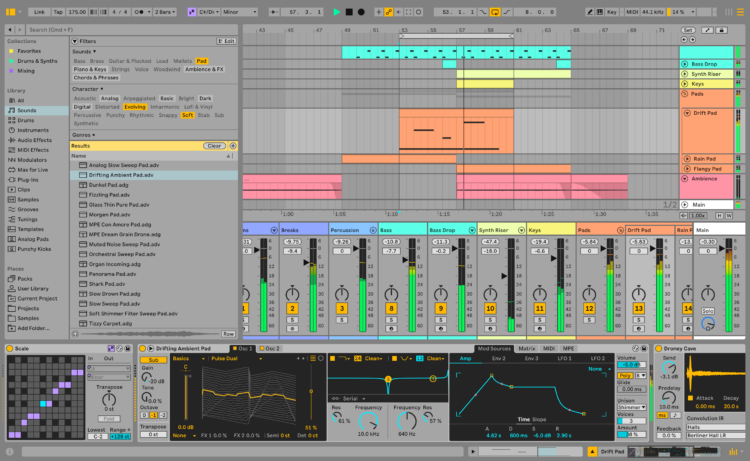After teasing its release last fall, Ableton has released the new Ableton Live 12 software – available for purchase on the company’s website and downloadable via your Ableton account if you’ve pre-ordered the program.
The company has also published a series of how-to videos, to get to know the program’s major feature updates and additions. It’s available to check out on the Ableton YouTube page now.
Dive into the new features
First, let’s recap and explore the key features we discussed back in November with its initial announcement:
- New MIDI abilities and AI-generated sound tools – Live 12’s MIDI Transformations and Generators allow producers to create and add a number of simple and complex variations to your MIDI clips, or use the program’s generative algorithms to create beats, chords, and melodies within the constraints you set.
- Improvements to MIDI editor – You can now rearrange the order of notes by velocity, pitch, and duration, use new routes to chop, split, stretch, or join notes, and more easily shape their velocity.
- New instruments and sound customizations: Meld, Roar, and Granulator III have been added, as well as four new Max for Live Performance Packs.
- An updated UI for a more intuitive workflow – Live 12’s interface gets an update with this edition. The Mixer tool can now be used in both Arrangement and Session View, and the new Stacked Details View allows you to look at the Clip Editor or automation and the Instrument or Effect you’re using simultaneously – which means you no longer need to switch between views.
Plus, a few more worth noting:
- Better sorting with Browser Tagging – With the new Browser Tagging tool, you can search thru Ableton’s factory sound content (including Performance Packs) with new labels for categories and descriptors – or add your own custom tags if you’re looking for additional ways to search and sort.
- Sound Similarity Searching and Swapping – Find comparable sounds and instrument or drum presets from a sample of your choosing using Ableton 12’s AI algorithms, and change them out via the Simpler or Drum Rack tools.
- More flexible modulation capabilities – Once a parameter has been mapped to a modulation source, you can still control it; plus, Max for Live devices including Envelope Follower, Shaper, and LFO now offer the ability to adjust any destination that’s being modulated.
- Freeze and Flatten your tracks – use the Edit menu or right-click the context menu of a Track Title Bar to do so.
Ableton Live 12’s Intro version costs 79 EUR / 99 USD / 69 GBP, and Live 12 Standard costs 279 EUR / 439 USD / 259 GBP and Live 12 Suite costs 599 EUR / 749 USD / 539 GBP. Get yours at Ableton.com.










